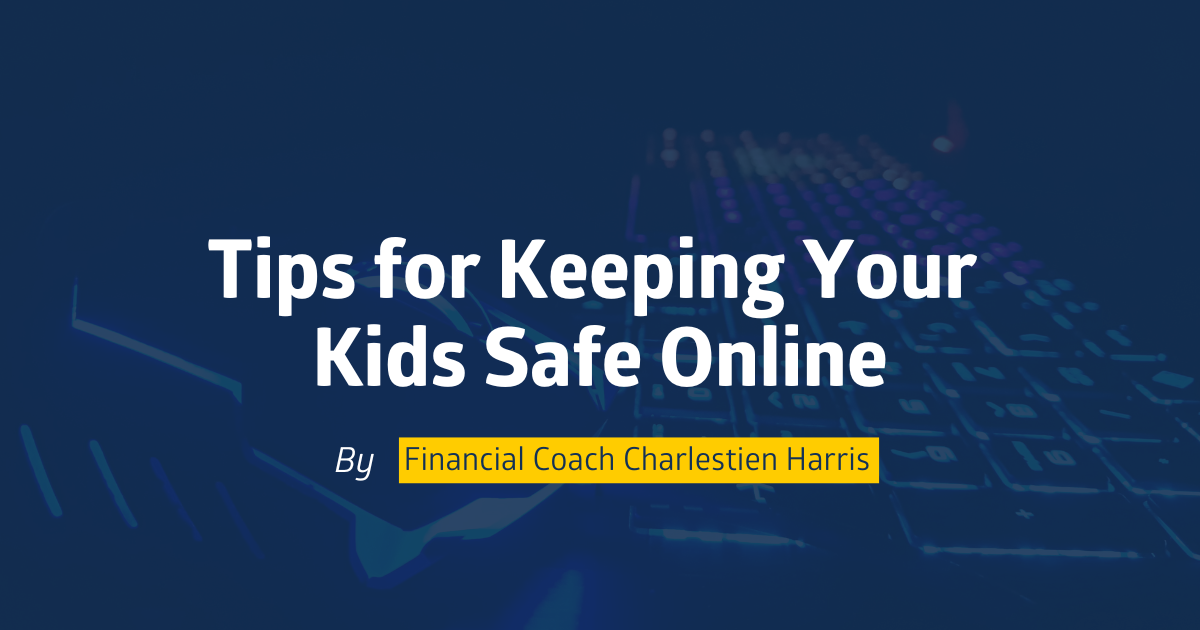By Charlestien Harris
It’s back-to-school time, and using technology is definitely the order of the day! Getting back into the swing of the school routine can be one of the most stressful times of the year, but it does not have to be. While it may be easy for kids to get caught up in all the excitement this time of year brings, it’s also very important to have a conversation with your children about internet safety. I want to encourage parents and communities to come together to keep kids safer online this school year. Using the internet can be incredibly convenient for your kids, but it’s not always safe. These tips can also apply to any financial transactions that you or your children may conduct online. Following these handy tips can reduce some of the risks.
- Avoid Unsecure Networks
With quick access to tablets, smartphones, and other internet-ready mobile devices, it’s easy for kids to gain access to networks that are not secure. They can unknowingly leave personal data unprotected as they access educational, banking, or shopping websites. Encourage your children to use only websites that require a network security key, and teach them to look for other clues such as the yellow shield icon that often indicates secure connections. Educate yourself as a parent so you can inform them about the dangers of accessing unsecured websites. - Change Passwords Frequently
Cybercriminals can be very cunning in seeking information to gain access to your child’s financial accounts and other accounts that may contain pertinent personal information such as social security numbers, addresses, and telephone numbers. Additionally, these criminals know that the data in those accounts is constantly changing, so they may attack the accounts multiple times. Have your child change their passwords at least once every two months, and remind them not to use the same password for different accounts. Show them how to look for password change confirmation emails, and teach them not to use familiar names or easily guessed information. - Use Only Trusted Websites
Many times, children don’t care which website they use to make a purchase or complete a download. They just want what they want when they want it! Unfortunately, some websites your children might visit are harmful. Teach your kids to recognize the difference between http: (not secure) and https: (secure) at the beginning of website URLs, as well as the lock icon displayed in their internet browser window. Explain to them that financial and personal information should be protected at all costs. - Stay Focused on the Objective
It is important to remind your child why they are using the internet in the first place. Whether it is to make a purchase, conduct online banking, or research for a class project, always remind them of the importance of using safe practices. Many websites contain advertisements, and marketing emails often offer special prizes, bonuses, or other offers that can redirect your child to other sites. It is very important for you as a parent to supervise your child’s online banking or shopping sessions and give them gentle reminders to complete what they intended to do. You might want to implement an ask-me-first rule if they want to check out a different deal or switch to another site. - Limit Online Time
Time on the internet is of the essence. The longer your kids are online, the more likely they’ll get distracted and visit problematic sites. Give them a time limit to complete their transactions, keeping in mind that new sites sometimes involve a learning curve. If they need more time, have them ask for it and show you what’s causing the delay. - Set Up a Second Line of Security
Most banks and online retailers now offer challenge questions in addition to passwords. So, if a cybercriminal tries to hack their account, they have to get past these questions to access your children’s data. Encourage your child to use questions with answers that aren’t readily obvious or easily guessed.
Getting online to bank or shop isn’t something you need to ban with your child, but they do need to take some basic steps to stay safe. These strategies are a good start for keeping them and their personal information from landing in the hands of cybercriminals.
For more information on this and other financial topics, visit www.banksouthern.com/blog. You can also email me at Charlestien.Harris@banksouthern.com or call me at 662-624-5776.
Until next week – stay financially fit!
